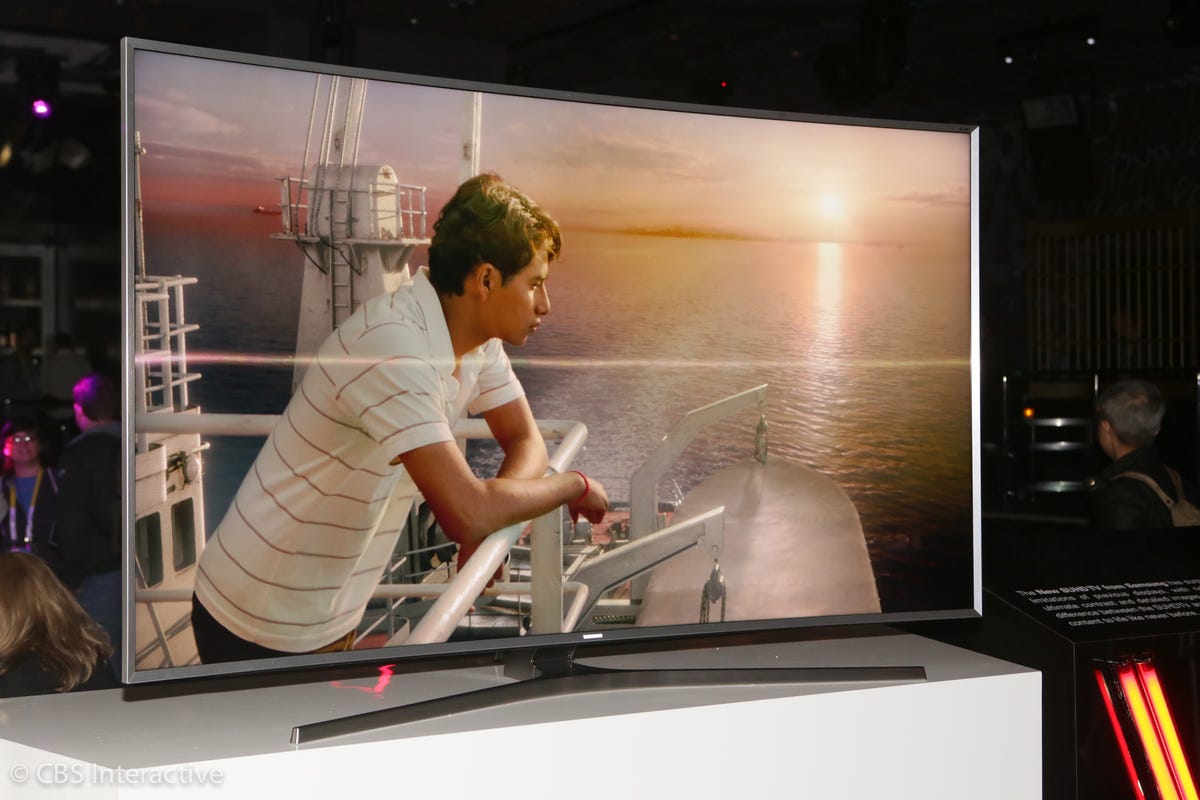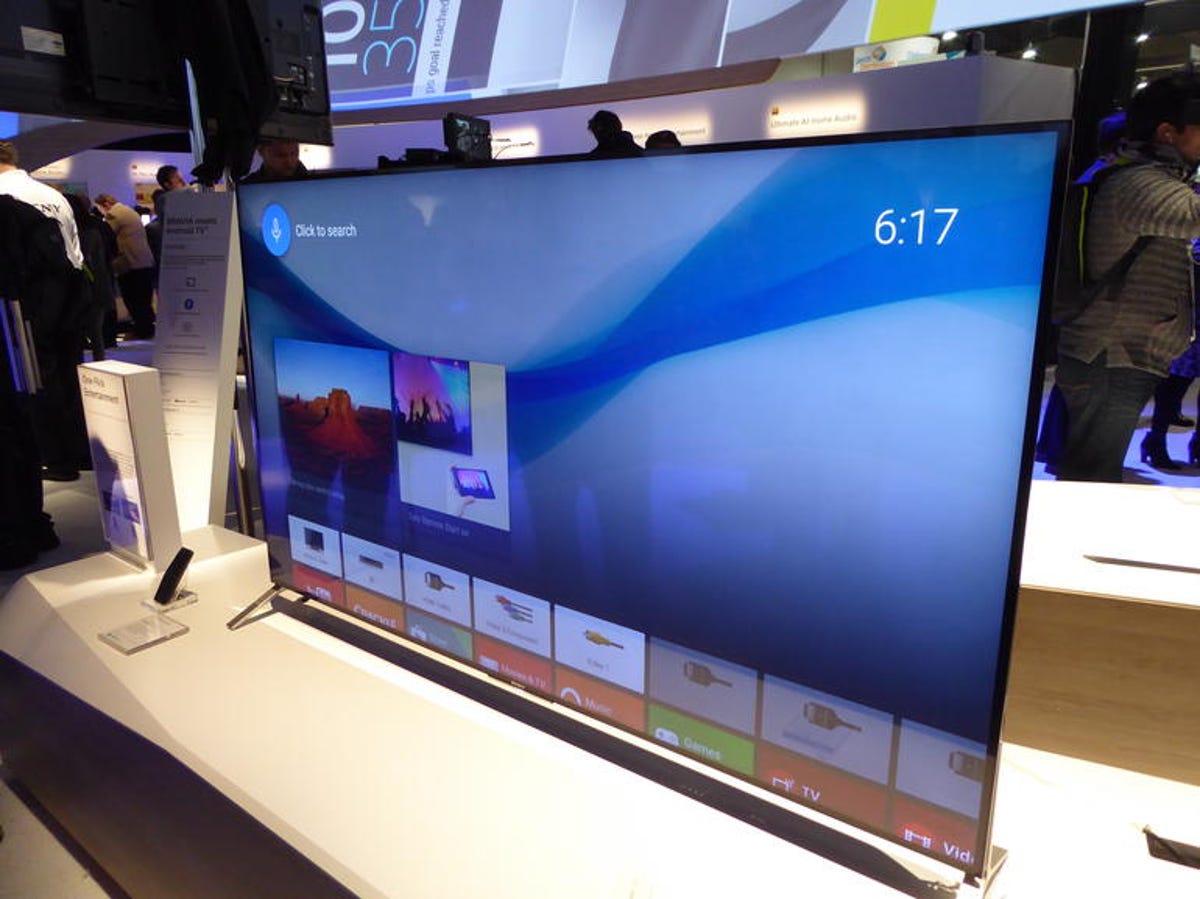
Sarah Tew/CNET
LAS VEGAS — The marketing departments at major TV makers love their buzzwords, and none more than Samsung.
The world’s biggest TV maker and dominant force in 4K UHD sales bet big on a confusing array of new terms at CES 2015, beginning with S(don’t-call-me-Super)UHD . Other TV makers joined in too, adding HDR, pixel splitting and numerous other enhancements to their best TVs.
The reason is simple: 4K TVs are dropping to mainstream prices fast, so something else is needed to sell profitable, high-end TVs. Both Samsung and LG, the number two TV maker, introduced more lines of 4K TVs than 1080p TVs at the show, and Sony’s ratio of 4K to 1080p series was 4:1. The show’s big booths were packed with 4K sets, with very few 1080p models on hand.
The TVs of CES 2015 (pictures)






There were plenty of 4K content announcements at CES last year, but almost none at CES 2015. Beyond the Panasonic 4K Blu-ray player, Dish 4K Joey and Netflix and Dolby’s HDR streams ( see our home video wrapup for more), there was little good news for people looking to feed their new 4K TVs something that takes advantage of all those extra pixels.
Here’s a look at some of the major announcements and trends in TV hardware.
Samsung SUHD vs. LG OLED
The latest front in the bitter corporate rivalry between Samsung and LG is new high-end TV tech. At CES Samsung introduced its “SUHD” line of LED LCDs in an attempt to compete against the picture quality supremacy of OLED, which delivers the best images we’ve ever tested .
SUHD picture enhancements include LEDs coated with Quantum Dots, a redesigned panel, improved LCD filters and, in the case of the flagship JS9500 series , full-array local dimming. They looked very good in person during a private room demo Samsung set up, but since they’re basically fancy LCDs I don’t think they’ll outperform OLED — although they’ll likely be significantly less expensive, especially the step-down JS9000 and JS8500 , which use edge-lit local dimming.
LG’s OLED introductions were all 4K, and we expect them to continue to be exorbitantly expensive. The company is delivering 55-inch and 65-inch flat (as opposed to curved) screen models, a 77-inch flexible model , and will continue selling the 1080p 55EC9300 from last year. No pricing was announced, but I’m guessing the 55-inch sets cost around $4,000, and the 65-inchers $6,000, at launch in the US.


Now playing:
Watch this:
LG’s OLED HDR: the next generation of the best TV ever
1:20
One interesting OLED prototype from LG Display improved the light output in highlights by 60 percent, the better to realize HDR content. There’s no word on its availability.
HDR: contrast vs. resolution
We’re much more excited about HDR (high dynamic range) TV tech than we ever were about 4K resolution. The most important picture quality factor is contrast — basically, the ability to produce dark blacks and bright whites — and HDR promises to improve contrast in both TVs and the content displayed on them.
Multiple companies, including Samsung, LG, Sony, Panasonic, TCL and Philips are talking about HDR in their TVs, and even more exciting, Dolby and Netflix are talking about HDR content. It’ll be a few years before it becomes widely available, but in demos I saw it was the most exciting picture quality enhancement at the show. Check out our HDR roundup for more.
Sharp, for its part, was focused squarely on resolution with its Beyond 4K TV . For my part, I don’t think the extra subpixels will make much visible difference.
More curved vs. more flat
Samsung says its curved TVs are extremely popular, despite the troubles we’ve noted in testing. So the company doubled down in 2015, introducing four series of curved 4K UHD sets. Beyond LG’s OLEDs, however, no other TV maker is selling curved TVs in the US.
Instead, Sony, LG and Sharp all touted flatter TVs. The Sony X900C is the world’s thinnest LCD at 0.2 inches (5mm) deep, making it thinner than your phone. Sharp will sell a similarly slim set later in the year, and LG’s best new LED LCD is almost as thin as its OLEDs.


David Katzmaier
Smart TVs: Homebrew vs. Roku and Google
Samsung and LG stuck to their guns in introducing new versions of their homebrew smart operating systems. LG’s Web OS 2.0 largely looks the same as the original, but it’s supposedly faster and offers more customization. Tizen is the name for Samsung’s new system, and it has a new interface, faster response time and of course a crazy new name. Samsung touts its open-source nature, but I’d be surprised if a flood of third-party developers jumped on board.
Google’s Android TV is open-source too, and in 2015 two TV makers, Sony and Sharp, embraced it over their own homebrew systems. To be fair Sharp’s approach is more of a hybrid between its old smart TV suite, with Android TV couched as one option among many. I like Sony’s approach better, however. It scrapped its old smart TV suite completely and put Android TV front and center.
Meanwhile Roku, our favorite smart TV system of them all, announced a couple of new partners in Haier and Insignia, an expanded lineup of TCL sets, and the beginnings of a plan for 4K.
See ya back in the lab
At CNET we’re looking forward to testing all of these new TVs and more — for example, the new 2015 sets (whenever they arrive) from Vizio, which doesn’t participate in CES anymore. In the meantime we have a couple of $10,000 luxury displays waiting in the lab after we recuperate from Vegas: the 65-inch 4K OLED and Sony’s latest 4K projector . It’s gonna be another great year in TVs.




